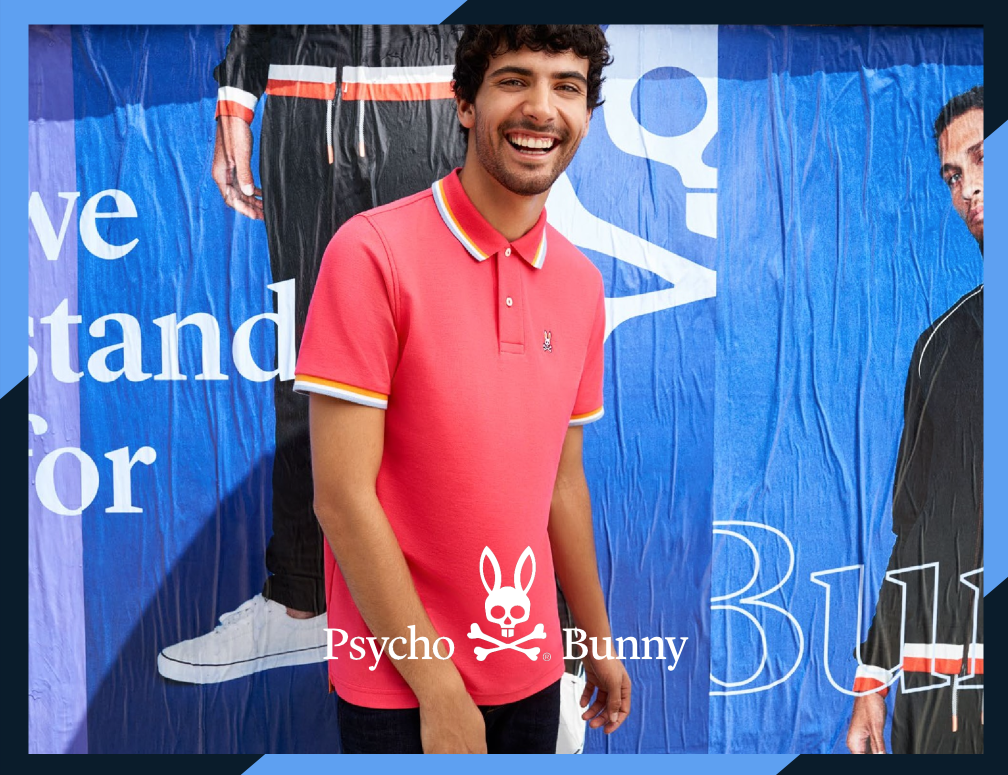Strategizing International Expansion

Recognition and Appeal by Strengthening Relationships
Madhouse’s collaboration with Psycho Bunny is a prime example of how a strategic, multifaceted marketing approach can help a fashion brand enhance its international appeal and strengthen its relationships with retailers. Through brand lift measurement, co-branding, retail activation, and a host of other strategies, Madhouse played a crucial role in positioning Psycho Bunny as a global streetwear contender. As a result, the brand not only saw increased recognition and appeal but also deepened its connection with international retailers, setting the stage for continued growth in the years to come.
The project focused on several key strategies, including Brand Lift Measurement, Co-Branding, Retail Activation, Brand Positioning, Influencer Marketing, Market Research, and Retail Partnership. Madhouse’s innovative approach helped the brand solidify its relationships with retailers and improve its brand recognition worldwide.
1. Brand Lift Measurement: Tracking Impact and Consumer Perceptions
The first step in the collaboration between Madhouse and Psycho Bunny was to measure the effectiveness of their campaigns in real-time. Brand Lift Measurement is a powerful tool for gauging the impact of marketing efforts on consumer perceptions, and it became the foundation of their strategy.
Madhouse utilized a combination of surveys, focus groups, and data analytics to track key metrics such as brand awareness, brand favorability, and purchase intent. By comparing these metrics before and after the campaign, Madhouse and Psycho Bunny were able to measure the direct impact of their marketing efforts on consumers’ perceptions.
2. Co-Branding: Building Synergy with Retail Partners
One of the standout strategies in Madhouse’s approach was co-branding—a collaborative effort that aligns the streetwear brand with prominent retail partners to enhance mutual recognition. Through carefully crafted campaigns, Psycho Bunny worked closely with key international retailers, integrating their brand into both online and physical retail spaces.
Co-branded initiatives, such as exclusive product drops, joint promotions, and shared advertising campaigns, helped Psycho Bunny expand its reach while allowing retailers to benefit from the prestige of associating with a popular, high-quality streetwear brand.
3. Retail Activation: Engaging Consumers Where It Counts
For any fashion brand, the retail environment is where the magic happens. To bring Psycho Bunny’s designs to life in stores, Madhouse developed a comprehensive retail activation strategy that included in-store promotions, product displays, and exclusive events. The goal was to make the brand stand out and create an engaging experience for customers, both in-store and online.
From launching pop-up shops in high-traffic locations to organizing influencer meet-and-greets and exclusive shopping events, Madhouse’s retail activations gave consumers the chance to engage with the brand on a personal level. This not only increased Psycho Bunny’s appeal but also boosted foot traffic for its retail partners, making it a win-win situation.
4. Brand Positioning: Defining Psycho Bunny’s Place in the Market
In the competitive streetwear market, brand positioning is key. Madhouse worked closely retailers to make the brand’s position stand out, relative to its competitors. This process involved deep market research, competitive analysis, and consumer insight studies to understand how Psycho Bunny communicates its unique value proposition effectively.
By aligning the brand’s core message with the preferences of international consumers, Psycho Bunny strengthen its relationship with retailers by providing them with a clear and compelling brand story to share with consumers.
5. Influencer Marketing: Leveraging Social Proof and Visibility
Influencers have become an essential part of modern fashion marketing, and Madhouse knew how to harness their power. Influencer marketing was a key component of the strategy to increase Psycho Bunny’s recognition among international consumers. Working with fashion influencers from different regions, Madhouse helped to amplify the brand’s presence both online and offline.
Influencers were involved in everything from styling Psycho Bunny pieces on social media to attending exclusive pop-up events hosted in collaboration with retailers. These partnerships not only generated buzz but also enhanced Psycho Bunny’s credibility, as influencers acted as trusted sources for the brand’s quality and style. This social proof was invaluable for bolstering brand recognition.
7. Retail Partnerships & Collaborative Marketing: Strengthening Relationships with Retailers
Perhaps the most crucial element of this campaign was the collaborative marketing efforts between Psycho Bunny, Madhouse, and its international retail partners. This mutual cooperation allowed all parties to benefit from increased visibility, traffic, and sales. Through joint promotions, exclusive collaborations, and shared marketing resources, Psycho Bunny and its retail partners created a unified front that helped build stronger, more productive relationships.
Madhouse facilitated these partnerships by ensuring that both the brand and retailers were aligned in terms of messaging, creative assets, and promotional efforts. The result was a seamless integration of Psycho Bunny into key international retail channels, further solidifying its place in the global streetwear market.
